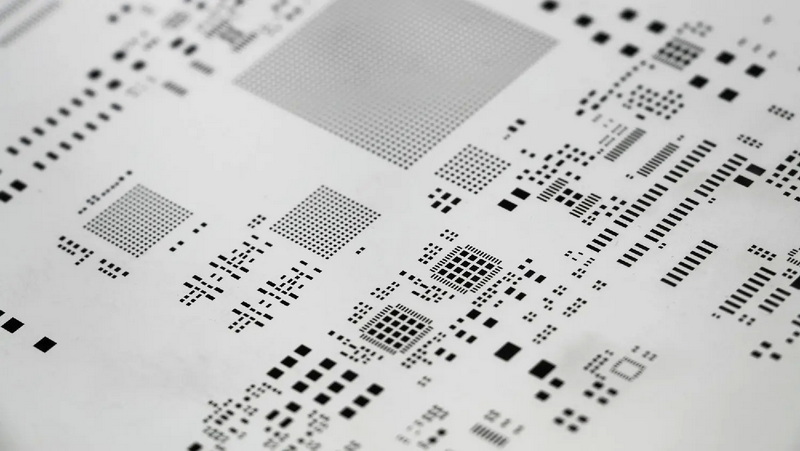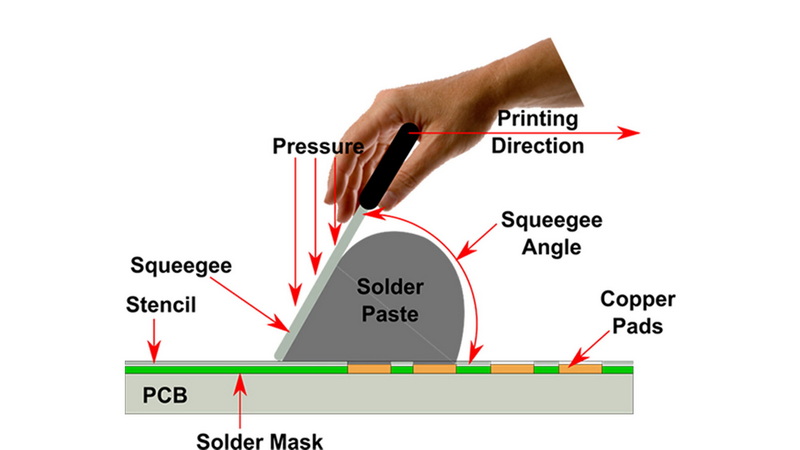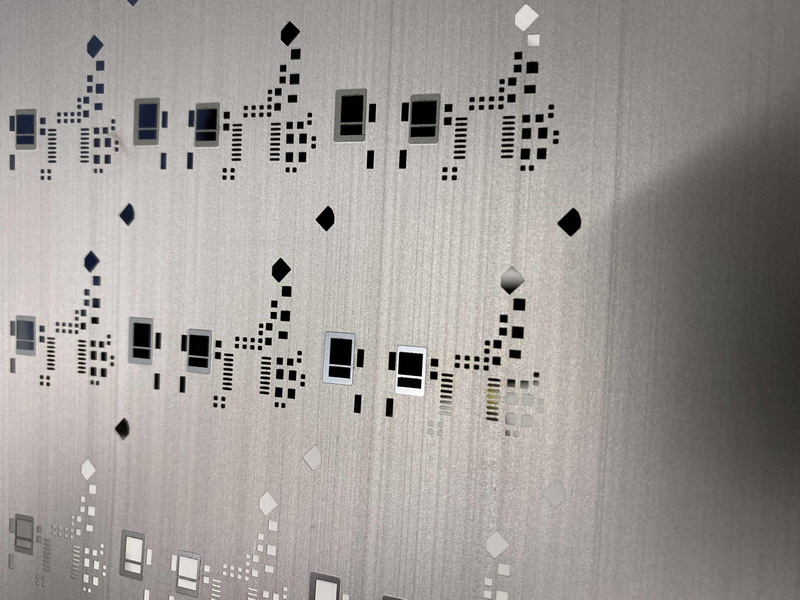Content Menu
● Introduction
● Overview of SMT Stencils
>> Types of SMT Stencils
● Materials Used in Low-Price SMT Stencils
>> Stainless Steel
>> Copper
>> Plastic (Mylar)
● Advantages of Low-Price SMT Stencils
● Disadvantages of Low-Price SMT Stencils
● Applications of Low-Price SMT Stencils
● Manufacturing Technologies
>> Laser Cutting
>> Chemical Etching
● Choosing the Right Material
● Maintenance and Care
● Future Developments
● Conclusion
● Frequently Asked Questions
>> 1. What are the most common materials used for low-price SMT stencils?
>> 2. What are the advantages of using Mylar stencils?
>> 3. How do I choose between a framed and frameless SMT stencil?
>> 4. What is the typical thickness of Mylar stencils?
>> 5. Can Mylar stencils be used for fine-pitch components?
Introduction
Surface Mount Technology (SMT) stencils are crucial tools in the assembly of printed circuit boards (PCBs), allowing for precise application of solder paste onto SMD pads. The choice of material for these stencils significantly impacts their performance, durability, and cost. In this article, we will explore the materials commonly used in low-price SMT stencils, focusing on their advantages, disadvantages, and applications.

Overview of SMT Stencils
SMT stencils are thin sheets with apertures that correspond to the solder pads on a PCB. They are used to apply solder paste accurately, ensuring efficient and defect-free reflow soldering. The materials used for SMT stencils can vary, but the most common ones include stainless steel, copper, and plastic (such as Mylar).
Types of SMT Stencils
1. Framed Stencils: These are more expensive due to the additional frame but offer better stability and reusability, making them suitable for high-volume production.
2. Frameless Stencils: Economical and lightweight, these are ideal for small batch or prototype PCB assembly.
3. Step Stencils: Allow for varying solder paste thicknesses, enhancing precision in soldering complex components.
Materials Used in Low-Price SMT Stencils
Stainless Steel
Stainless steel is widely used for SMT stencils due to its hardness, corrosion resistance, and long service life. However, it is more expensive than plastic materials. Newer stainless steel derivatives, like PHD material, offer improved release properties and heat resistance, enhancing print quality. Stainless steel stencils are particularly beneficial for high-volume production or when precision is critical.
Copper
Copper stencils are less common due to their higher cost and lower durability compared to stainless steel. However, they offer better electrical conductivity, which can be beneficial in certain applications, such as in the assembly of components requiring specific thermal management.
Plastic (Mylar)
Mylar stencils are made from polyester film and are a cost-effective alternative for low-volume or prototype PCB assembly. They are lightweight, easy to handle, and can be cut with a CO2 laser. Mylar stencils are available in various thicknesses, with thinner options providing sharper results but being less durable. The ease of customization and low cost make Mylar stencils ideal for educational projects or small-scale manufacturing.
Advantages of Low-Price SMT Stencils
- Cost-Effectiveness: Mylar stencils are significantly cheaper than metal stencils, making them ideal for small-scale projects or prototyping.
- Ease of Use: Plastic stencils are lightweight and easy to handle, reducing shipping costs and storage space requirements.
- Flexibility: Mylar can be easily cut into custom shapes and sizes, accommodating unique PCB designs.
Disadvantages of Low-Price SMT Stencils
- Durability: Plastic stencils have a shorter lifespan compared to metal ones and may not withstand repeated use.
- Precision: While suitable for many applications, plastic stencils may not offer the same level of precision as metal stencils, especially for fine-pitch components.

Applications of Low-Price SMT Stencils
Low-price SMT stencils are particularly useful in:
- Prototyping: For small-scale or one-off PCB assembly projects where cost is a significant factor.
- Low-Volume Production: Suitable for small batch manufacturing where the need for high precision is not critical.
- Educational Projects: Ideal for students or hobbyists learning SMT assembly techniques without the need for expensive equipment.
Manufacturing Technologies
The manufacturing process for SMT stencils includes laser cutting, chemical etching, and electroforming. Laser cutting is the most common method for producing both metal and plastic stencils due to its precision and cost-effectiveness. The choice of manufacturing technology depends on the material and the desired level of precision.
Laser Cutting
Laser cutting is widely used for both metal and plastic stencils. It offers high precision and is cost-effective, making it suitable for both small and large-scale production. Laser cutting allows for intricate designs and is particularly beneficial for Mylar stencils, where precision is crucial for achieving sharp apertures.
Chemical Etching
Chemical etching is another method used primarily for metal stencils. It involves removing material using chemicals, which can be less precise than laser cutting but is still effective for certain applications.
Choosing the Right Material
When selecting a material for a low-price SMT stencil, consider the following factors:
- Application: The type of components and the precision required.
- Budget: Plastic stencils are more economical.
- Durability: If the stencil will be used frequently, metal might be preferable.
Maintenance and Care
To extend the life of SMT stencils, proper care and maintenance are essential. Cleaning the stencil after each use and storing it in a dry environment can help prevent damage and ensure consistent performance.
Future Developments
As technology advances, new materials and manufacturing techniques are being explored to improve the performance and cost-effectiveness of SMT stencils. Innovations in laser cutting technology and the development of new materials could further enhance the precision and durability of low-price stencils.
Conclusion
Low-price SMT stencils, particularly those made from plastic materials like Mylar, offer a cost-effective solution for prototyping and small-scale PCB assembly. While they may lack the durability and precision of metal stencils, they are ideal for applications where budget constraints are significant. Understanding the advantages and limitations of different materials can help engineers and hobbyists choose the best option for their specific needs.

Frequently Asked Questions
1. What are the most common materials used for low-price SMT stencils?
The most common materials used for low-price SMT stencils are plastic (Mylar) and, to a lesser extent, stainless steel for those requiring more durability.
2. What are the advantages of using Mylar stencils?
Mylar stencils are cost-effective, lightweight, and easy to handle, making them ideal for prototyping and small-scale production. They can be easily customized and are suitable for manual printing processes.
3. How do I choose between a framed and frameless SMT stencil?
Framed stencils offer better stability and are suitable for high-volume production, while frameless stencils are more economical and ideal for small batch or prototype assembly.
4. What is the typical thickness of Mylar stencils?
Mylar stencils are commonly available in 3-mil or 4-mil thicknesses, with the thinner option providing sharper results but being less durable.
5. Can Mylar stencils be used for fine-pitch components?
While Mylar stencils can handle fine pitches, they may not offer the same level of precision as metal stencils. For very fine-pitch components, stainless steel stencils are recommended.




















